You’ve got your warehouse space and now you need to figure out the best way to organise all your inventory. Where do you even start?
Pallet racking is key, but did you know there are a few different warehouse layout options to choose from?
The four most common setups are the Row shape, U-shape, I-shape, and L-shape. Each has pros and cons, so you will want to consider how much space you have, how much inventory you need to store, and how easily you need to access certain products. The right pallet racking layout can make all the difference in how efficiently your warehouse runs.
The Row Shaped Pallet Racking Warehouse Layout
The Row Shaped Pallet warehouse layout is the most common and makes maximum use of the warehouse footprint.
- With a Row shape, you have the racking all in the same orientation in rows with designated aisles in between
- Depending on the type of forklift truck being used there is minimal wasted space
- Different pallets and products can be stored and allocation of fast-moving products can be made to be sited dispatch areas
- The combination of a WMS system ensures accurate product allocation and minimal pick errors.
- One downside is that aisles will limit the use of any oversized/bulky items and do not always leave enough space for bulk storage or pick-and-pack areas.
The U-Shaped Pallet Racking Warehouse Layout
The U-shaped layout is a popular option for many warehouses. It provides easy access to all pallet locations, allowing for quick storage and retrieval of goods.
- With a U-shape, you will have pallet racking along three walls, with an open end for forklifts and pump pallet trucks to enter. This open space in the centre gives you plenty of room to manoeuvre, turn, and easily access pallets for block stacking.
- A U-shaped layout is ideal if you have a high volume of goods coming in and out. The open design provides multiple access points to all pallet locations, reducing congestion and maximising workflow. Your forklift operators will appreciate the flexibility and efficiency of this layout.
- One downside is that you may lose some storage space compared to other options. However, the increased productivity and reduced handling times can offset this loss. For many warehouses, the pros of a U-shape outweigh the cons.
- If maximising storage capacity is a priority, consider an I-shaped or L-shaped layout. An I-shape has pallet racking on opposite walls, with an aisle down the centre. An L-shape has racking on two adjacent walls with the corner open. These options provide more storage but can reduce accessibility.
The layout you choose depends on your priorities and needs. Evaluate how much storage you require the types of goods you handle, and your desired handling efficiency. A U-shaped pallet racking layout is an excellent choice for many warehouses, providing the perfect balance of storage, access, and workflow.
The I-Shaped Pallet Racking Warehouse Layout
The I-shaped warehouse layout is a simple but effective design for many warehouses. As the name suggests, pallet racking runs along two parallel walls, with an aisle down the centre. Creating an I shape.
- Pros: The I-shaped layout maximises storage space along the walls. It also makes getting from one end of the warehouse to the other efficient as forklift operators and warehouse staff can quickly move up and down the central aisle.
- Cons: The I-shaped layout is not very flexible. Once installed the racking will stay in this configuration. It can also be difficult to access pallets in the centre section. A forklift will be required to extend far into the racking.
- The I-shaped layout is a simple, space-efficient design that works well for storing and retrieving pallets. However, it may not suit warehouses that require a lot of flexibility or have narrow aisles.
The I-shaped pallet racking layout is ideal if you want to maximise storage space along walls and need quick access up and down the warehouse, but do not require a lot of reconfiguration once installed. With the correct forklifts and warehouse management system to keep track of pallet locations, an I-shaped layout can work well for organising your warehouse. Think about your priorities and how you operate before deciding on this linear layout.
The L-Shaped Warehouse Layout
The L-shaped pallet racking layout is another popular option for many warehouses. It provides an efficient use of space by utilising the corner area that is often left unused. This layout works well if you have goods that need to be stored for quick picking in one area, and bulk storage in another.
- The shorter end of the L shape is ideal for high-volume goods that need to be accessed frequently. This area should have multiple aisles for easy picking and replenishment.
- The longer end of the L is better suited for goods that are accessed less often. This bulk storage area only needs a few aisles since entire pallets are being moved at once.
Having an L-shaped layout in your warehouse means you can separate fast- and slow-moving goods while keeping everything in the same general area, making it easy for forklift operators and pickers to locate what they need without travelling far. The L-shape also helps maximise the use of your wall space by providing more opportunities for vertical storage.
Some tips for an L-shaped pallet racking warehouse layout:
- Choose a sturdy pallet racking system that can handle the weight of bulk goods. Selective pallet racking or drive-in/drive-thru racking are good options.
- Make the most of vertical space by using racking that goes all the way to the roof. This is especially useful for the bulk storage area.
- Consider using pallet flow or carton flow rails for the high-volume area. This makes it easy to access goods on a FIFO (first in, first out) basis.
- Leave enough room for forklifts and pallet jacks to manoeuvre, especially in the L-shaped corner.
- You need to bear in mind that space will be lost at the angle where the 2nd runs meet to form the ‘L’ shape.
An L-shaped pallet racking layout, when designed properly, is an efficient use of space that separates fast- and slow-moving goods while keeping everything conveniently located in your warehouse. With the right racking system and a well-thought-out floor plan, this layout option is effective for many types of warehouses.
So there you have it, the basics of the four main pallet racking layout options for your warehouse. The way you choose to organise your space can have a huge impact on productivity and efficiency. Think about how your teams move around the warehouse and access inventory. Consider which layout would make the best use of your available square footage based on the size and type of goods you need to store. Row-shaped, U-shaped, I-shaped or L-shaped, now you have more of an understanding you can make the right choice for your unique needs. Set up your warehouse right the first time and you will reap the benefits for years to come through fast, accurate order picking and plenty of room for growth.
At STS we will guide you through the process and provide you with the most suitable layouts and options for your pallet racking layout, get in touch if you have a project in mind



